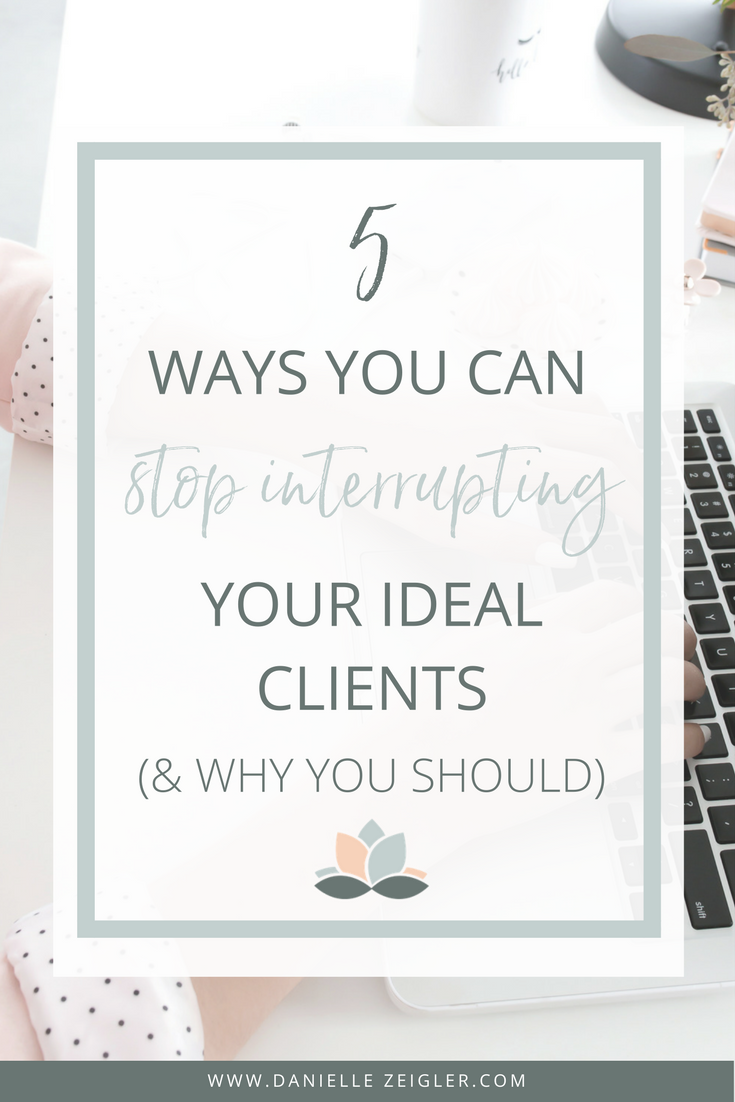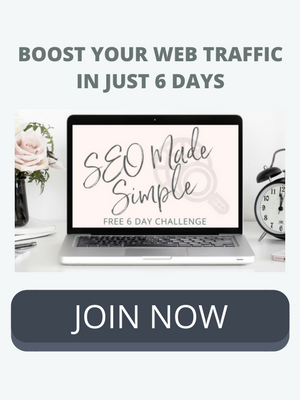5 Ways Inbound Marketing Will Attract Customers TO You
/There is a myriad of opportunities to connect with your potential ideal clients and customers, but the WAY in which you do so can mean the difference between enchanting them into brand ambassadors or annoying them so much that they’re put off for life. While it’s important to take a holistic view of your marketing methods, I believe many business owners simply don’t realize the full power of inbound marketing and end up sticking with only interrupting their audience instead.
What is outbound marketing? (aka interruption marketing)
Outbound marketing encompasses many traditional routes to customers, such as:
Ads:
Print, e.g. magazine ads
TV commercials
TV shopping channels
Online ads, e.g. Facebook and PPC (Pay-Per-Click)
Cold methods:
Cold calling/telemarketing
Cold pitching
Trade shows
Networking (in-person or online)
Round-robin letters/email blasts
Direct mail
Essentially, they all involve you interrupting your prospective clients’ day.
How to use inbound marketing to gain your ideal client’s trust
Most of us have grown up being bombarded by outbound marketing throughout each day of our lives.
In fact, our global population currently consumes more than 8 hours of media per day (10+ hours in the US; ZenithOptimedia via Quartz) and, with the majority of publishers having ad revenue streams, marketing clutter increases year on year.
Whether they’re on the food you eat, billboards, clothing labels, or via your favorite beauty blogger, it can feel like we’re drowning in ads.
Marketing researchers have estimated a person living in a city in the 1970s was exposed to up to 500-2,000 ad messages a day, compared with up to 5,000+ brand exposures (and 300+ ads noticed per day) at present.
As the clutter increases, we get savvier at avoiding ads.
We use caller ID, spam filtering, ad blockers (615 million devices, and growing, now use AdBlock – PageFair) and companies, like TiVo and Gmail, produce technologies to help us avoid outbound marketing.
We often choose to do our own research online, ask for recommendations, read reviews and use platforms like Pinterest to collect our interests and desired products. And as one area gets saturated, we move to another – see Kipp Bodnar’s frustration at “scorched earth marketing” on HubSpot’s blog.
It’s our responsibility, as purpose-led and ethical business owners, to reduce the outbound marketing clutter.
But I’m not saying you should never advertise or make cold inquiries.
Don’t get me wrong, you need to use the best avenues to reach customers which suit your business and personality. And it’s getting easier to qualify your target audience before you send any marketing their way.
But, even though the influential giants Google and Facebook enable companies of all shapes and sizes to advertise via custom-built audiences or media tailor-made to individual users, any type of outbound marketing can still feel intrusive.
Why?
It’s in the very nature of it because the people you’re promoting to have not given you their permission. They haven't directly asked to see information about that product.
As a heart-centered business owner, I know you want to employ responsible marketing.
So, if you want to reduce how often you disturb your ideal clients, what other avenues are available to you?
5 ways to invite permission from your ideal clients
Outbound is not your only option.
In fact, inbound marketing is my preferred method of reaching new subscribers, followers and clients.
This method fits with my personality better than outbound marketing. As an introvert (specifically an INFJ on the Myers-Briggs scale), I hate to feel like I'm annoying people. I've found that my introvert clients tend to share this fear. (Anyone else? I'd love to hear from you in the comments!)
But the best part?
When you know how to use inbound marketing effectively, prospective customers want to hear (and buy) from you.
So, what is inbound marketing?
In my view, the core values of inbound marketing are:
Helpfulness
Empowerment
Community
Helpfulness
Offering relevant advice and knowledge without any expectation of sales.
Empowerment
Enabling your tribe (readers, fans, followers, subscribers, clients and prospective customers) to make the decisions which are right for them, not you.
Community
In our interconnected world, inbound marketing encompasses both traditional and new routes to customers, such as:
Publishing helpful, relevant content, such as:
Blogging/articles
Books/eBooks
Videos
Podcasts
Social media (Facebook, Twitter, Instagram, LinkedIn, etc.)
Interactive niche events, e.g.:
Conferences / summits
Webinars
Workshops
Polls
Competitions
Challenges, like my SEO Made Simple
Personalized free subscriptions, like:
Email broadcasts
Newsletters
Email marketing – sequences and auto-responders
SEO – optimizing your website, to:
Make the most of your content
Empower your potential clients to make their own decisions (and at least 15 more benefits of using SEO)
Using Pinterest as a search engine (because that’s what it is!)
If you haven't guessed, SEO is my favorite inbound marketing method. So I've created a FREE 6 day challenge to help you get started!
Want to improve your ranking and get more of the RIGHT traffic to your website, i.e. ideal clients who’ll love your content (and your offerings)?
Which inbound marketing activities are you going to start doing (or do more of)?
Any ah-has or questions?
Let’s chat in the comments below.

















